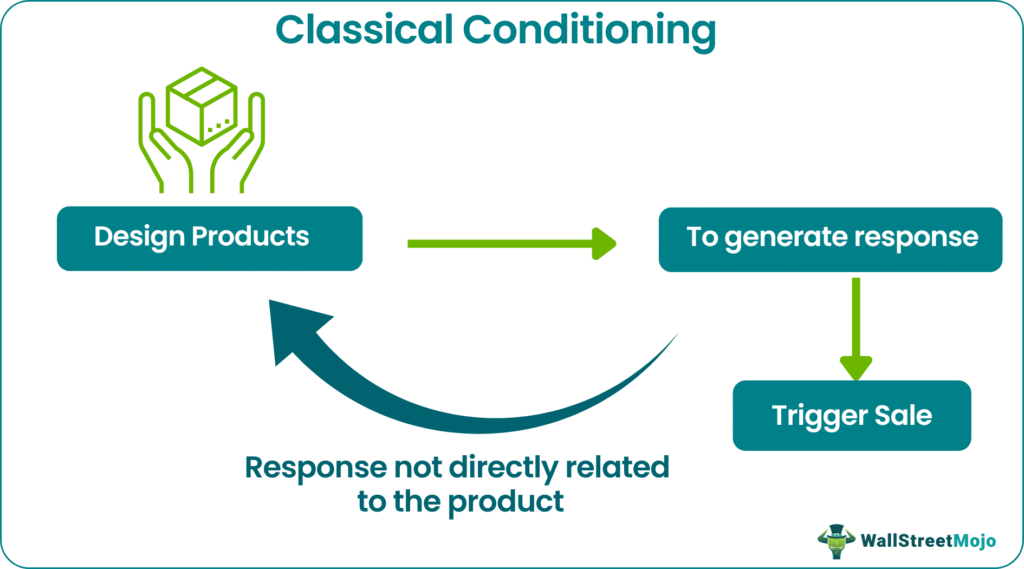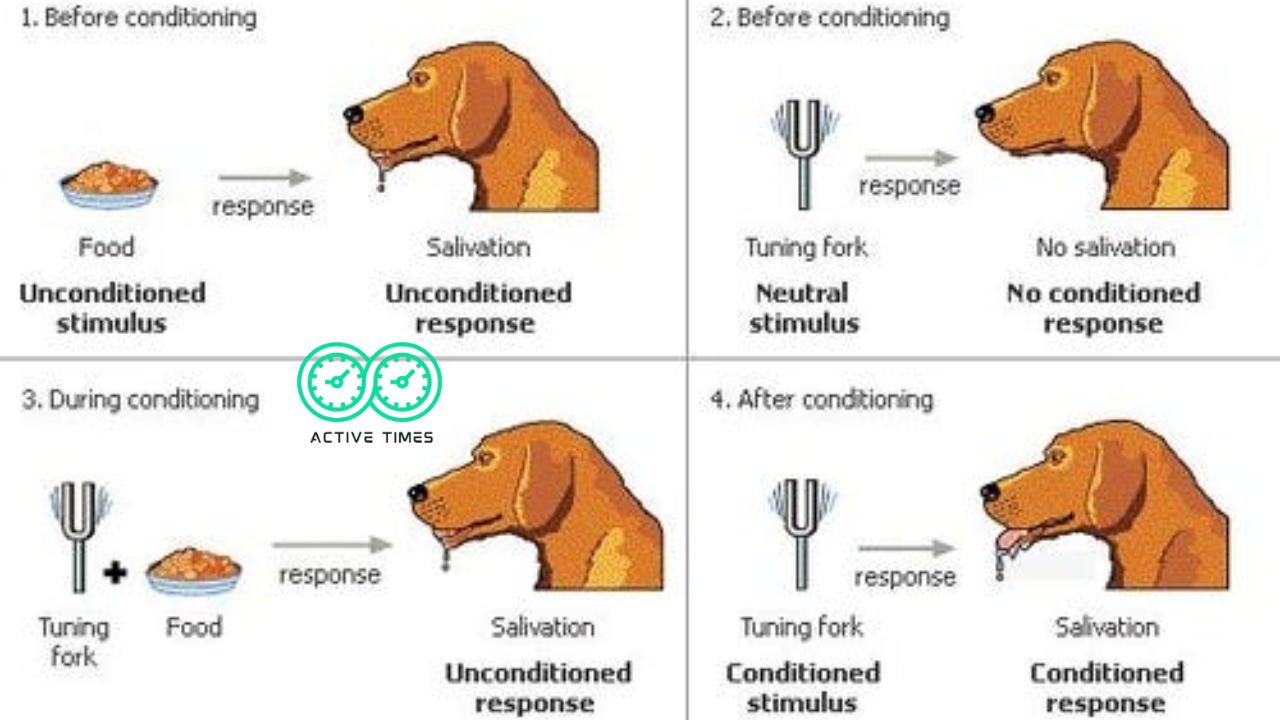Have you ever felt hungry just hearing the sound of a food delivery app notification? Or felt nervous when you heard a dentist drill—even if you weren’t the patient? That’s classical conditioning at work. It happens to all of us every single day, even if we don’t realize it. In this guide, we’ll explore 10+ easy examples of classical conditioning in everyday life, explained so simply that even a child can understand. You’ll learn why these reactions happen, where they come from, and how you can spot them in your own daily routine.
What Is Classical Conditioning? (Simple Explanation)
Classical conditioning is a concept from psychology that explains how we learn through association. Imagine you hear a certain sound or smell a familiar scent and suddenly feel a strong emotion or physical response. This happens because your brain has linked that sound or smell with an experience from the past.
This idea came from a famous experiment by a scientist named Ivan Pavlov. He found that dogs could learn to drool when they heard a bell because they associated the bell with food. This simple idea explains why humans react to so many triggers in our everyday lives without even thinking about it.
For example, if you always hear a doorbell right before friends arrive, the sound of a doorbell might make you feel excited—even if it’s just the delivery driver. That’s classical conditioning in action.
Common Examples of Classical Conditioning in Everyday Life
You may think classical conditioning is just a science term you’ll never use. But in reality, it’s happening around you all the time. Every time you feel happy, nervous, hungry, or scared because of a sound, sight, or smell, it could be a conditioned response.
Think about these scenarios:
- A song plays that was popular during your school days, and suddenly you feel nostalgic.
- The smell of sunscreen instantly makes you think of summer vacations.
- A notification sound makes you reach for your phone, even if it wasn’t your device.
These are all real-life examples of classical conditioning where your brain connects a neutral trigger (a sound or smell) with an emotional or physical response.
Pavlov’s Dog Experiment (Made Easy)
Ivan Pavlov’s experiment is the best way to understand classical conditioning. He worked with dogs and noticed that they naturally salivate (drool) when they see food. Then he started ringing a bell before giving them food. After doing this a few times, the dogs began to salivate as soon as they heard the bell—even when there was no food.

Here’s what happened:
- Food = made the dogs drool naturally (unconditioned response).
- Bell = at first had no effect (neutral stimulus).
- After pairing bell + food, the bell alone started making the dogs drool (conditioned response).
This simple experiment showed how any sound, sight, or smell can be linked to feelings or actions over time.
Hearing Ice Cream Truck Music
One of the most relatable examples of classical conditioning is the sound of an ice cream truck. As children, we learned that when we heard that cheerful music, ice cream was coming. Over time, the music alone could make us feel excited or hungry—even if we weren’t planning to buy anything.
School Bell Means Recess
In schools, the ringing of a bell signals different activities. At first, the bell is just a sound. But after repeating this day after day, students begin to associate the bell with specific feelings. For example, the lunch bell makes them hungry, or the end-of-day bell makes them feel happy and free. This is classical conditioning because the neutral sound of the bell now causes an emotional response.
Classical Conditioning at Home
Classical conditioning happens at home more than you think. For example:
- Your pet hears the sound of a treat bag and runs into the kitchen.
- The sound of a video game startup music makes you feel relaxed and ready to play.
- Smelling freshly baked cookies makes you feel like it’s a holiday, even if it’s not.
These everyday moments are powerful because they happen unconsciously. You don’t think about them—they just occur.
More Real-Life Examples of Classical Conditioning
Let’s look at even more situations where classical conditioning shapes your reactions without you realizing it. These examples show how sounds, smells, sights, and even places can trigger emotions or physical sensations.
- Hearing your alarm sound makes you instantly alert—even if it’s on TV.
- A dentist’s waiting room smell may make you feel anxious because of past experiences.
- The sound of a loved one’s laughter might bring feelings of happiness or comfort.
Every day, we are surrounded by triggers that our brain has connected with memories and feelings.
Car Seatbelt Warning Sound
The loud beep that your car makes when you don’t buckle up is another perfect example. At first, the sound is just annoying. But over time, you learn to associate it with the action of putting on your seatbelt. Eventually, you might buckle up immediately as soon as you hear the sound—sometimes even before the sound starts.
This is classical conditioning helping to create a positive habit.
Smelling a Scent That Reminds You of Someone
Scents are one of the strongest triggers for memory and emotions. For example, if your grandmother always wore a certain perfume, smelling it later in life might bring back warm feelings and vivid memories. This happens because your brain connected that scent with your past experiences with her.

Pets Running When They Hear Food Bags
Have you ever noticed how your dog or cat runs to the kitchen when they hear the sound of a food bag or can opening? At first, the sound meant nothing to them. But after hearing it before every meal, they learned to associate it with food and started reacting automatically.
Classical Conditioning in Health and Emotions
Classical conditioning doesn’t just create fun or comforting reactions—it can also affect health and emotions. For example:
- Phobias: A child who gets stung by a bee may feel scared every time they hear a buzzing sound.
- Nausea: Cancer patients undergoing chemotherapy sometimes feel sick at the sight of the treatment room because their brain has linked it with nausea.
- Anxiety: Hearing a certain ringtone might make you anxious if you always get stressful calls from work.
This shows how powerful conditioned responses can be in shaping how we feel and behave.
Why Does Classical Conditioning Happen? (Simple Answer)
Our brains are wired to look for patterns and make connections. This helps us learn quickly and adapt to our environment. Classical conditioning is like your brain’s shortcut system. It helps you respond faster without having to think deeply every time.
For example, if touching a hot stove burned you once, you learned quickly to avoid doing it again. This ability to connect a stimulus (the stove) with a response (pulling your hand away) helps keep us safe.
How You Can Notice Classical Conditioning in Your Day
Take a moment to think about your daily routines. Do certain sounds, smells, or sights trigger feelings or actions? Maybe a notification sound makes you check your phone, or the smell of coffee wakes you up in the morning. These are all small ways classical conditioning shows up in modern life. Noticing these patterns can help you understand your habits—and even change ones you don’t like.
The Bottom Line
Classical conditioning isn’t just a psychology theory—it’s part of how we all live and learn every day. From pets hearing food bags to humans reacting to alarm clocks, we’re constantly forming new associations. By understanding these connections, we can recognize our habits, emotions, and even create positive changes in our lives.
Next time you feel an emotion triggered by a sound or smell, ask yourself: “What memory or experience is my brain connecting this to?” You might be surprised how often classical conditioning is influencing your behavior.
